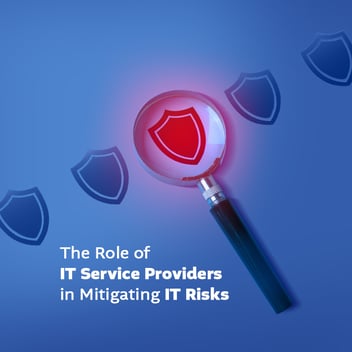Understanding the Blockchain
Blockchain is an emerging buzzword in the technology sector which is setting those in the know on fire, but which many people just don’t comprehend. At the outset it sounds like another technological get-rich-quick scheme, and it might actually be, but this one may have some legitimacy behind it.
It’s not surprising if you’re confused at the idea of selling virtual real estate on the Internet, paying up to $120,000 for a 10-by-10-meter plot of land that doesn’t actually exist, but is located in a virtual land and city, all in the web. And yet, a company managed to raise over $25 million in just half a minute. Let’s look at what blockchain is, how it works, and what it means for the future of finance and computing as well as the IT support industry.
The Future or the Latest Fad?
If you’ve heard about blockchain, it’s probably in the context of either a scam or that it’s going to completely change the world. It first arrived on the scene in 2009, and formed the backbone of Bitcoin, the virtual currency that everyone wishes they had, but few understand how to get. If it feels a bit like the dot-com bubble of 1999, don’t worry; that’s understandable.
Still Fortune 500 companies are investing in this infrastructure, with IBM, Accucenture and the like devoting entire divisions to it. It’s certainly not a fad or an illusion. It’s here and it’s real. Silicon Valley has invested over $1.3 billion in the tech this year alone.
What Is Blockchain Technology?
Essentially, blockchain technology is a kind of ledgering technology that keeps a master list of everyone with whom it interacts. Consider using Google Docs for shared work. That document keeps a list of everyone who has ever logged into it and made changes. It’s the same with blockchain, though blockchain is highly secure and very detailed, tracking every single change that’s made and keeping fingerprints of every step of the way.
Sticking with the Google Docs idea, that software creates multiple copies and versions of a document, which can get confusing as people implement different changes at the same time or move documents onto and off of a server. With blockchain there’s a single, trusted document that tracks every single thing that ever happens to it.
From Cryptocurrency to Advertising
Blockchain started as the backbone of Bitcoin. It’s also the backbone of newer cryptocurrency Ethereum. It’s moving, however, to many other industries. The advertising industry can use it to track ad efficiency online. The music industry can use it to track individual songs. Lenders can use it to track deeds and documentation for real estate transactions.
It’s especially useful for shipping companies to track their product and bills of lading. In the drug industry it can be used to keep track of the supply train, something increasingly important in the opioid crisis era. It has the potential to increase trust to businesses in just about every sector, while cutting out middlemen who can make mistakes.
IT Industry: Solving Problems of Trust and Efficiency
There’s also questions about the technology. As it becomes the trend, will it be applied to problems where it’s not needed, and will it needlessly overcomplicate these things? In the end, it’s about a combination of efficiency and trust, and that’s where the IT support industry comes in. If you’re in need of managed IT services for your business, U.S. Computer Connection is here to help. For more information, check out our blog, and give us a call today.



